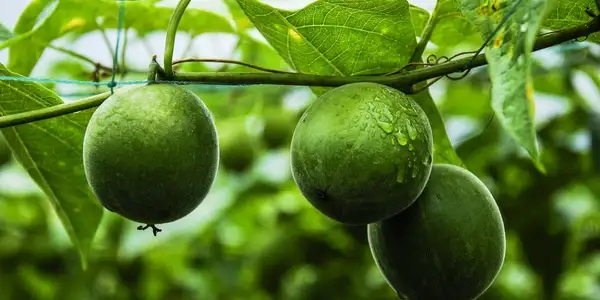
As consumers become more aware of added sugars, low-calorie sweeteners have found a place at the table, and monk fruit is the newest member of that group. But...
Read more


|
Nutrient |
Per 100 g |
|---|---|
|
Calorific value |
200 kJ |
|
Energy |
48 kcal |
|
Carbohydrates |
9 g |
|
Protein |
0 g |
|
Fat |
0 g |
The food Pomelo (fresh) is composed of the following macronutrients.
Pomelos, also known as Chinese grapefruits or pomelos, contain a variety of nutrients that can have a positive effect on health. Some benefits of pomelos include:
Pomelos belong to the rue family and are a natural cross between grapefruit and orange. They are larger and have a thicker skin than common grapefruits and taste sweeter and less sour. Pomelos are native to tropical and subtropical regions of Asia and Florida, USA.
The skin of the pomelo is green to yellow, the fruit itself is yellow to pink and can weigh up to 2 kg. The flesh is juicy and sweet, but also has a slightly bitter taste. Pomelos can be eaten raw, used in salads, or made into jam or juice.
Pomelos are available from December to May and should be stored at room temperature to maintain their freshness. They will keep for several weeks in the refrigerator.
What is the best way to store a pomelo?
A pomelo should be stored at room temperature to maintain its freshness. However, it can also be stored in the refrigerator to extend its shelf life. A pomelo will keep for several weeks in the refrigerator.
What is the difference between a pomelo and a grapefruit?
Both the pomelo and the grapefruit belong to the rue family, but there are some differences between the two fruits: The pomelo is larger and heavier than the grapefruit. The skin of the pomelo is thicker and rougher than that of the grapefruit. Grapefruits have a greener skin and a more yellowish or pinkish flesh than grapefruits, whose skin and flesh are orange. Grapefruits taste sweeter and less sour than grapefruits. Grapefruits are native to tropical and subtropical regions of Asia and Florida, USA. Grapefruits come from the USA, Israel, South Africa and Brazil.
In which regions do grapefruits grow best?
Pomelos do best in tropical and subtropical regions with mild winters and plenty of moisture. They need plenty of sunlight and heat to thrive and produce a good crop. Some of the regions where pomelos do well are Southeast Asia: countries like Thailand, Vietnam, Malaysia and Indonesia have ideal conditions for growing pomelos and are large producers of the fruit. Florida, USA: Florida has a subtropical climate and is one of the main producers of pomelos in the USA. South Africa: The Western Cape and Eastern Cape regions of South Africa have good conditions for growing pomelos. Brazil: In Brazil, there are some regions such as Sao Paulo and Bahia that have ideal conditions for growing pomelos. Israel: Pomelos do well in the warm regions of Israel and there are large growing areas in the coastal regions.
What are the varieties of pomelos?
There are many different varieties of pomelos, varying in size, color, flavor and texture. Some of the most popular varieties are Siamese Pummelo, White Pummelo, Pink Pummelo, Chandler Pummelo, Oroblanco Pummelo, Melogold Pummelo, Duncan Pummelo.
When is the best time to buy pomelos?
The best time to buy pomelos depends on the region where they are grown. In most regions, pomelos are harvested between October and March. In Southeast Asia, where pomelos are primarily grown, they are available from October to January. In Florida, USA, pomelos are harvested from November to April. In South Africa, they are available from April to June, in Brazil from January to May, and in Israel from November to January. It should be noted, however, that harvest times can vary from year to year and depend on weather conditions. A pomelo is ripe when its skin is slightly brownish and yields slightly to light pressure. A pomelo that is not quite ripe can be allowed to ripen at home as long as it is not damaged.
I love this app! The food is super varied and filling (and soo delicious!). With one purchase I have the ingredients for a whole week together, thanks to the shopping list. The ingredients are also readily available and not really expensive.
Nicole — App User
The first app in the field of nutrition tips that really convinces me. Updates get minor issues out of the way and new features are added all the time. Top!
Unknown user — App User
ave already tried many nutrition apps but here it is really great and you save a lot of time because you do not have to enter all the meals yourself! 👍👏
Mareen — App User
I don't usually rate apps but this one has to be rated.... I have never had such a great app just fits everything.... The nutrition plans are just absolutely awesome just everything is awesome many many thanks
Mareen — App User
This app is an excellent support for healthy eating even with little time and effort! Super recipes are also included. Highly recommended!
Lennert — App User